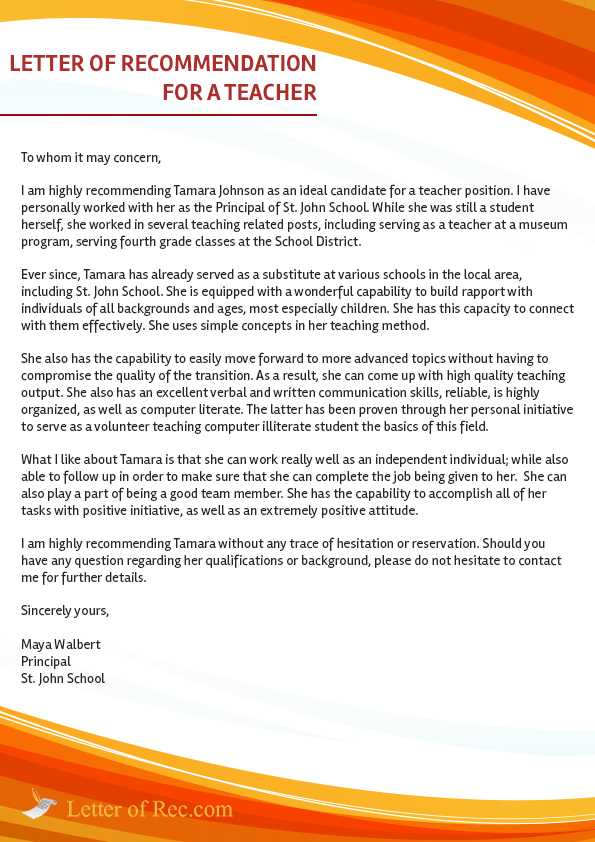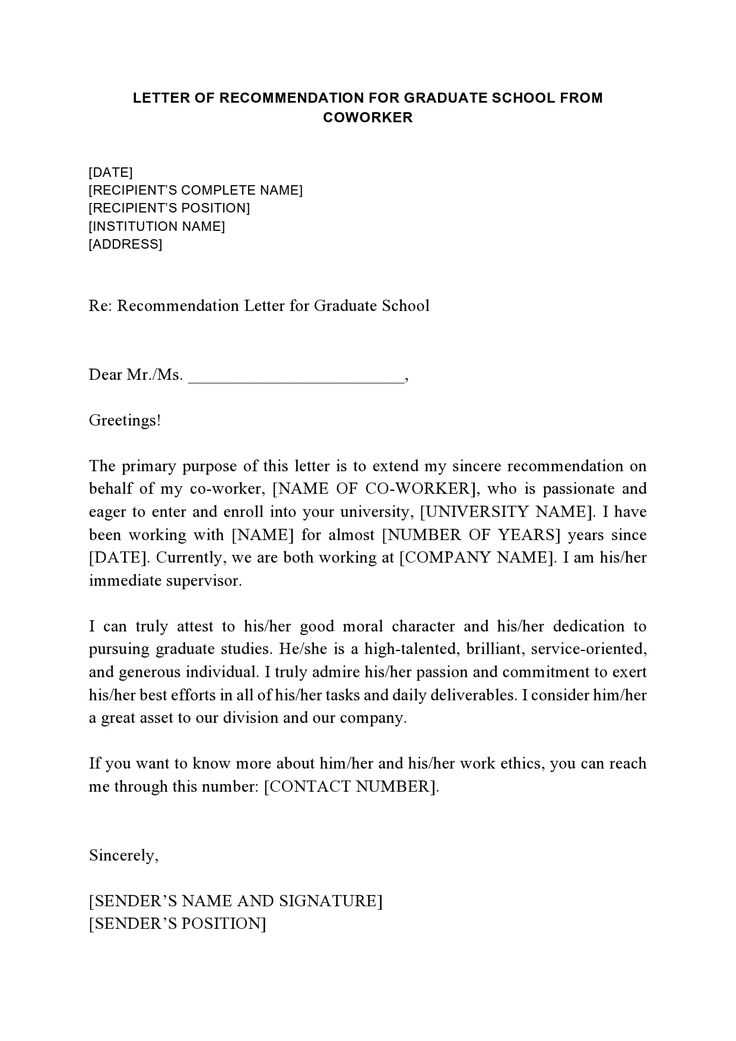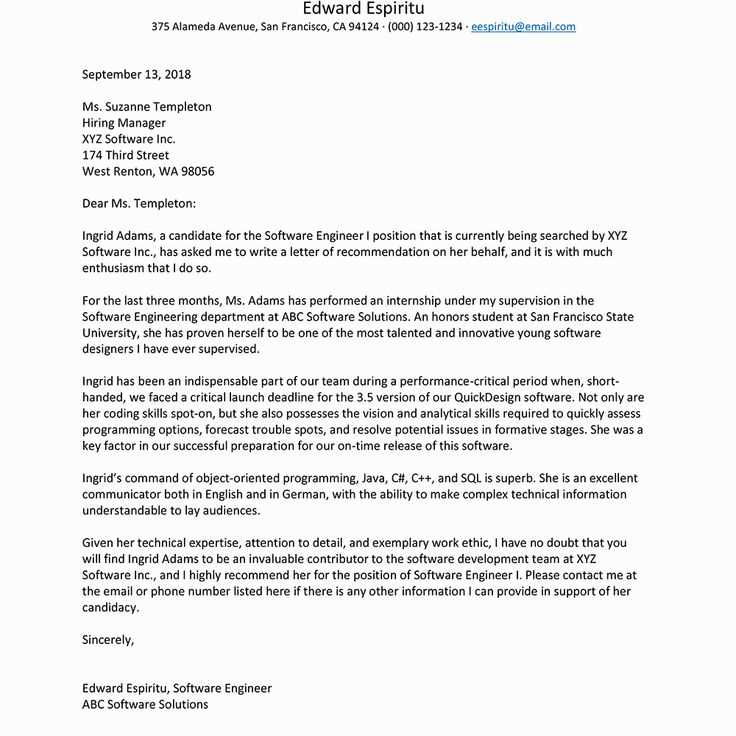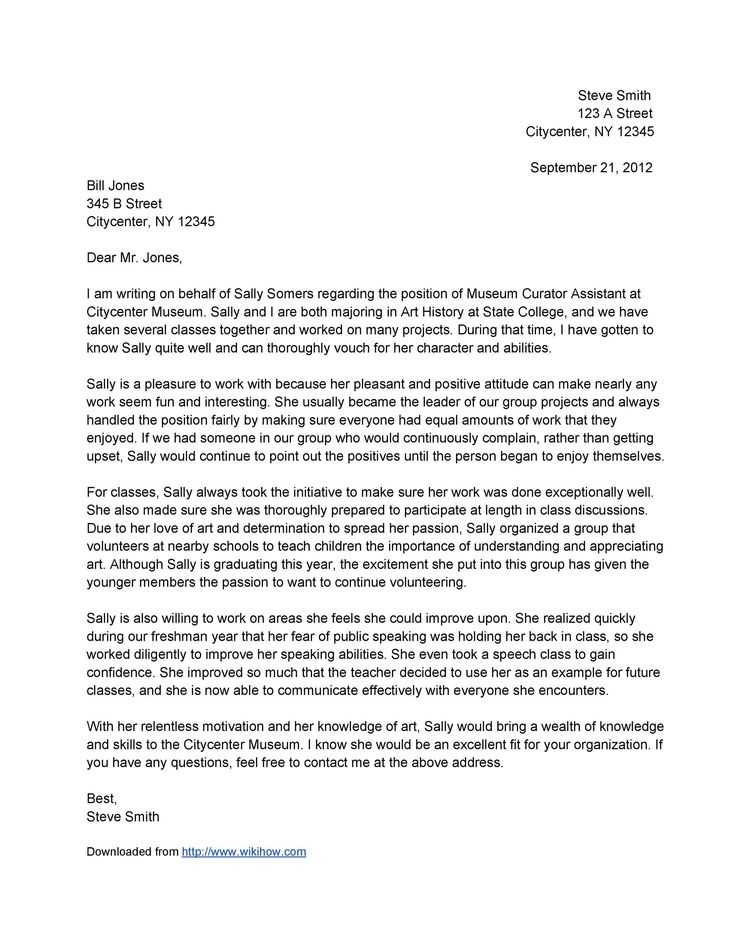Professional Letter of Recommendation Template

Writing a professional endorsement for someone can be a crucial task, whether it’s for a job application, academic program, or personal recommendation. A well-written reference is more than just a formality–it’s an opportunity to highlight an individual’s strengths and accomplishments in a way that stands out.
In this guide, we will explore how to create a compelling endorsement, focusing on structure, tone, and content. We will provide you with the necessary tools to tailor your document to fit the specific needs of the situation, ensuring it leaves a lasting impression on the reader.
By following a few simple principles, you can draft a powerful recommendation that effectively conveys the qualities and potential of the person you’re supporting. Whether you are a supervisor, professor, or colleague, your input can play a significant role in helping them succeed.
Essential Elements of a Recommendation Letter
When crafting a reference document, certain key components are necessary to make it impactful. A well-structured endorsement helps present the individual in the best light, focusing on their unique qualities, skills, and experiences. Each section of the document serves a distinct purpose in building a convincing case for the person being recommended.
Introduction and Purpose

The opening should clearly state the purpose of the endorsement and how the writer knows the individual. This section sets the tone for the rest of the document and establishes the writer’s credibility.
- State the relationship between the writer and the individual
- Clarify the context (e.g., job, academic program)
- Specify the length of time the writer has known the individual
Highlighting Strengths and Qualities

The heart of the document lies in detailing the strengths and qualities that make the person stand out. This section provides specific examples to support the claims made.
- Focus on key skills relevant to the position or opportunity
- Provide real-life instances that demonstrate their abilities
- Include personal traits like dedication, leadership, and work ethic
By ensuring each of these elements is included, the recommendation will present a clear and persuasive argument in favor of the person being endorsed.
How to Customize Your Template
Adapting a recommendation to suit specific circumstances is essential for ensuring it resonates with the intended audience. Customization allows you to highlight the most relevant qualities and experiences that align with the goals of the person being endorsed. A one-size-fits-all approach rarely works, so tailoring the content to the specific role or program is critical.
Start by focusing on the specific qualities and experiences that best match the position or opportunity the individual is applying for. If the recommendation is for a job, emphasize professional achievements, work ethic, and relevant skills. For academic programs, highlight intellectual abilities, academic accomplishments, and personal growth.
Additionally, modify the tone of your message to match the context. A more formal tone might be required for professional settings, while a slightly warmer, more personal tone may be appropriate for academic or community-focused recommendations.
Choosing the Right Tone and Style
Selecting the appropriate tone and style is crucial in creating an effective endorsement. The way you convey your message can greatly influence how the individual is perceived. A recommendation should reflect the nature of the opportunity while remaining true to the individual’s character.
Formal vs Informal Tone
In most professional settings, a formal and respectful tone is expected. This helps convey the seriousness of the endorsement and adds weight to your words. However, if the recommendation is for a more casual or community-oriented position, a slightly less formal tone might be more appropriate.
Balance Between Professionalism and Personality
While maintaining a professional approach, it’s also important to let the individual’s personality shine through. A well-rounded endorsement should highlight both their technical skills and personal traits, showcasing them as a well-balanced candidate.
Tips for Writing Strong References
Writing a compelling recommendation requires more than simply listing a person’s accomplishments. A powerful endorsement highlights the individual’s unique qualities while providing concrete examples of their skills and contributions. This makes your reference both meaningful and persuasive.
Focus on providing specific, measurable examples that showcase the individual’s strengths. Rather than simply stating that they are hardworking or dedicated, describe situations where they demonstrated these traits effectively. This approach adds credibility and depth to your recommendation.
Also, avoid vague language and generalizations. The more personalized and specific your reference is, the more impactful it will be. Always consider the context in which the individual is applying and tailor your message to match the expectations of that environment.
Common Mistakes to Avoid in Letters

Writing a strong endorsement involves more than just following a structure–it also requires avoiding common pitfalls that can weaken the message. Simple errors in phrasing or tone can detract from the impact of your recommendation and make it less effective.
One major mistake is being too vague. General statements such as “they are a great person” don’t provide any meaningful information to the reader. Instead, focus on specific examples that demonstrate the individual’s qualities and skills.
Another mistake is lacking personalization. A generic recommendation, which could apply to anyone, fails to distinguish the individual. Tailoring the message to highlight their unique attributes and how they align with the opportunity at hand is essential for creating a compelling recommendation.
How to Format a Recommendation Letter
The way you structure an endorsement can significantly affect how it is received. A well-organized document ensures that your message is clear, easy to read, and professionally presented. Proper formatting helps guide the reader through the content and reinforces the main points effectively.
Basic Structure and Organization
Begin with a formal introduction, stating your relationship with the individual and the purpose of the recommendation. Follow this with a body that highlights their qualifications, skills, and personal qualities, using specific examples to support your claims. Finally, conclude with a strong statement of endorsement, summarizing why they are a strong candidate for the opportunity.
Presentation and Readability
Ensure that the document is neatly organized with clear paragraphs and headings. Use a professional font and consistent formatting throughout. Avoid long, dense blocks of text, and keep the content concise to maintain the reader’s attention.